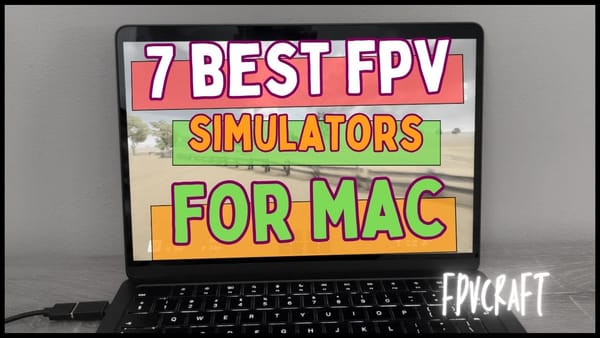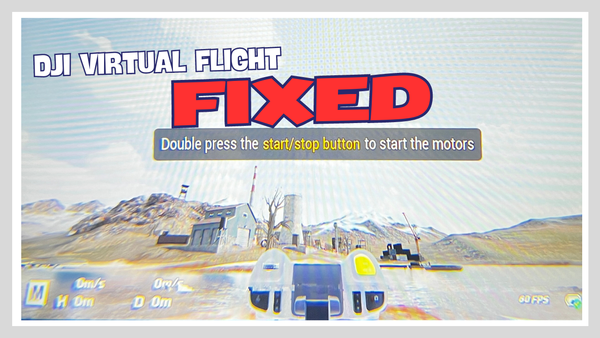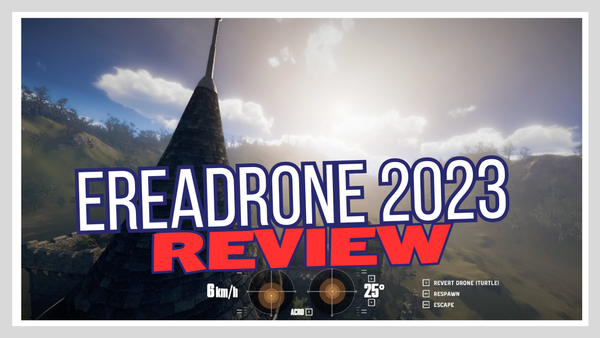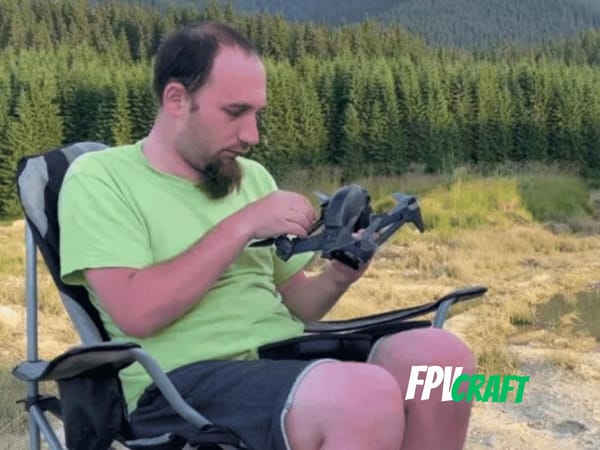8 Reasons to Choose DJI FPV over DJI Avata Drone
In this article, we want to share with you 8 reasons why you may want to choose the DJI FPV drone over Avata.
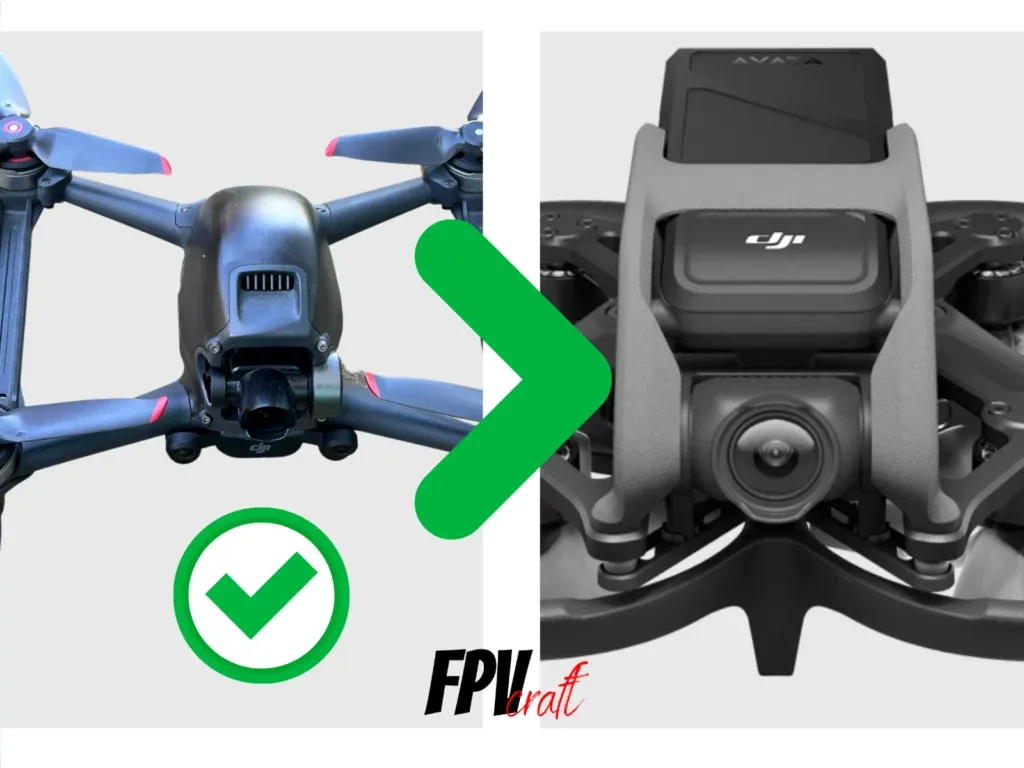
Sometimes, when we want to get into flying FPV drones, many of us prefer simplicity, reason for not going with custom drones.
Believe me, I have seen a lot of that going around.
But aside from simplicity, there could be a few reasons to choose either the DJI FPV or DJI Avata drone as either the first FPV drone or for some other motives.
This post is the first of two from this series, sharing with you 8 reasons why you should choose the DJI FPV drone over Avata.
Note: Whilst this post focuses on the qualities of the DJI FPV, the other post focuses more on DJI Avata and why to choose it over the DJI FPV drone. These are not contradictory topics; they are simply reasons to choose one drone over the other.
» RELATED: 9 Reasons to Choose DJI Avata over DJI FPV Drone
1. Looking for a long-range, simple FPV drone
It’s well known that the DJI FPV and Avata are fantastic FPV drones to fly long-range without issues. They are capable of flying for miles before the signal starts to deteriorate.
But the DJI FPV is much better at long-range flight than Avata because it has better stability, can fly slightly longer, and does not tumble.
However, the issue with the DJI FPV, even if flying long-range, is with the camera.
This drone has a 1/2.3 inch CMOS, capable of recording in 4k at 60 frames per second.
However, the video quality is below average compared to many standard drones. As for an FPV drone, it is quite good, but Avata does better.
However, the point still goes to the DJI FPV because you’re probably going to use the camera only for live transmission and not recording.
That’s because you may want to attach a GoPro to it.
Anyway, to circle back, I can personally say that there’s an issue with the height restrictions imposed by DJI.
In most countries or territories around the world, the maximum altitude you can fly is 120m or 400ft, but you can set the DJI FPV drone at a maximum of 500m or 1640ft.
Don’t worry; we’re not about to break the laws here. But the same with the altitude restrictions, these usually apply above ground level.
Therefore, if you intend to fly your DJI FPV up a mountain, you may be able to legally do it (as long as you fly closer to the mountain), but the maximum height restriction will stop you from ascending.
Note: Please always check your country or territory’s drone laws before assuming you can do this; in some parts of the world, you can benefit from this extension of the drone regulations, but not everywhere.
2. You can attach a GoPro to it.
The bulky and heavy potato, the DJI FPV, has strong motors capable of reaching 100km/h in less than two seconds.
These motors also can support a full-size GoPro, as many FPV drone pilots do.
Because of the drone’s stability, stronger signal, and even less risk of tumbling, even with a GoPro or other action camera attached, this drone has been eyed by even professional drone pilots looking to fly and capture cinematic content.
The two reasons you will love the DJI FPV with an action camera attached for long-range flights are because:
- Of the excellent flight time, allowing you to fly a few miles out before having to return (please keep your drone in VLOS to follow regulations)
- If you lose signal with the drone, the DJI auto return-to-home, even on signal loss, is excellent, both on DJI FPV and Avata.
You will be in big trouble if you try to attach a GoPro to DJI Avata instead.
The DJI Avata has an issue where it can quickly tumble without an action camera because of the bad gravity center of the drone (the battery is too high up, and the motors are situated too low).
A GoPro will make things much worse. You can’t really attach a full-size GoPro to it because it will be too heavy to fly, and the Avata will struggle a lot.
And to attach a “bone” GoPro, you will have to power it, where you have to drain power directly from it, not being the best choice.
For all of these reasons, the DJI FPV would be an excellent choice instead of Avata to attach an action camera to create fantastic cinematic content.
» RELATED: DJI FPV Drone Long-Term Review
3. You want speed with the DJI FPV drone.
The DJI FPV is a high-speed drone and can reach 100km/h in less than two seconds, as mentioned above (in manual mode).
Moreover, it can fly at a speed of 140km/h or 87mph in manual mode;
In comparison, the DJI Avata can reach a speed of 97 km/h or 60 mph.
But it would be a terrible choice to try and fly the DJI Avata so fast because it takes little to tumble this drone, and it would be hard for it to recover.
» RELATED: Best Gain & Expo Rates for DJI FPV Drone
4. The DJI FPV has good stability when flying.
As we already mentioned around several times, the DJI FPV, at least compared to DJI Avata, has excellent stability.
It does not tumble over, even at higher speeds, when taking sharper turns or even freestyle.
The DJI FPV worked perfectly fine every time I used it and in every scenario.
Just a single time, it happened to get a gimbal overload error or something like that when flying, but it didn’t affect my flight, and I returned it with success. Then, I didn’t have this issue again.
Anyway, I was always entrusted to fly my DJI FPV drone, even abusing its flight capabilities, and it demonstrated to be very efficient.
In comparison, we already mentioned Avata’s inferior stability and risk of tumbling.
» RELATED: Does DJI FPV Drone Have RockSteady and HorizonSteady?
5. Choosing a good drone for dives
The DJI FPV, because of the above point, can sustain even aggressive flight stiles; it can dive like a charm.
I’ve tried diving with the DJI FPV drone, which proved fantastic every time.
Moreover, the strong motors will help the drone quickly recover after freefall, even if the drone weighs around 800 grams.
There are many online videos where this drone was excellent with freestyle and diving and even capturing immersive sceneries when diving next to a waterfall.
» RELATED: Can DJI FPV Drone Freestyle?
6. Taking advantage of the return-to-home feature
Most FPV drones do not have a return-to-home feature. It requires you to install a GPS module.
Even like that, the software behind its return to home is not something very reliable.
DJI FPV, again, a DJI drone, has one of the best return-to-home modules.
This equals with the DJI Avata. I don’t want that drone left out.
But the DJI FPV would also be more difficult to land and has very poor resistance to crash.
An FPV drone, or DJI FPV in manual mode, to land it can be a bit aggressive, especially for non-experienced FPV drone pilots.
But with the return to home feature and normal mode, you can set this drone to auto-land, and it will do without a scratch.
Unless you land it on an inclined hill, like me. Your DJI FPV will roll into the valley 🙂 Yes. I’ve learned my lesson with four bent propellers.
» RELATED: Tips to Consider Before Your First DJI FPV Manual Flight
7. You’re looking for an FPV drone to fly well in strong winds.
Did you know that the DJI FPV is notoriously known amongst FPV pilots and forums as a “potato”?
It’s because of this shape many pilots make fun of this drone.
But look at the bright side.
It has fantastic aerodynamics and can fly excellently even in strong winds because of its strong motors.
According to DJI, if you fly the DJI FPV in strong winds, it can resist wind speeds up to 11.1 m/s. But that’s normal mode.
There’s no limit in manual mode (or acro), although DJI does not recommend flying in very high winds.
An FPV drone will be fantastic to fly in extreme weather because of its maximum speed; you can push through these winds.
Not to mention, being a much heavier drone than DJI Avata, the DJI FPV wind resistance is absolutely fantastic.
» RELATED: DJI FPV Wind Resistance (explained)
8. DJI FPV is much cheaper than DJI Avata
Considering the actual price of the DJI Avata, the DJI FPV is the best bang for your buck.
DJI Avata may come with older or newer goggles, depending on your choices, but it always comes with the motion controller and not the DJI FPV Remote Controller 2, which is what you want to enjoy the most immersive experience with that drone.
Moreover, the older DJI Goggles, the DJI FPV Goggles V2, are still considered the best goggles even after the DJI Goggles 2 or DJI Integra goggles were released.
One main reason is because of its versatility. You can attach a Rapidfire or other analog module, and you can use the same goggles from your DJI FPV even to fly analog drones. It’s also compatible with several digital VTX systems from DJI.
This means that you can use the goggles you acquired in the kit not only with your DJI FPV drone but with almost any other FPV drone existant, especially if you have installed an analog module.
If you ever decide to go with the DJI FPV instead of Avata, we can help you with a link (affiliate) to the Amazon store.
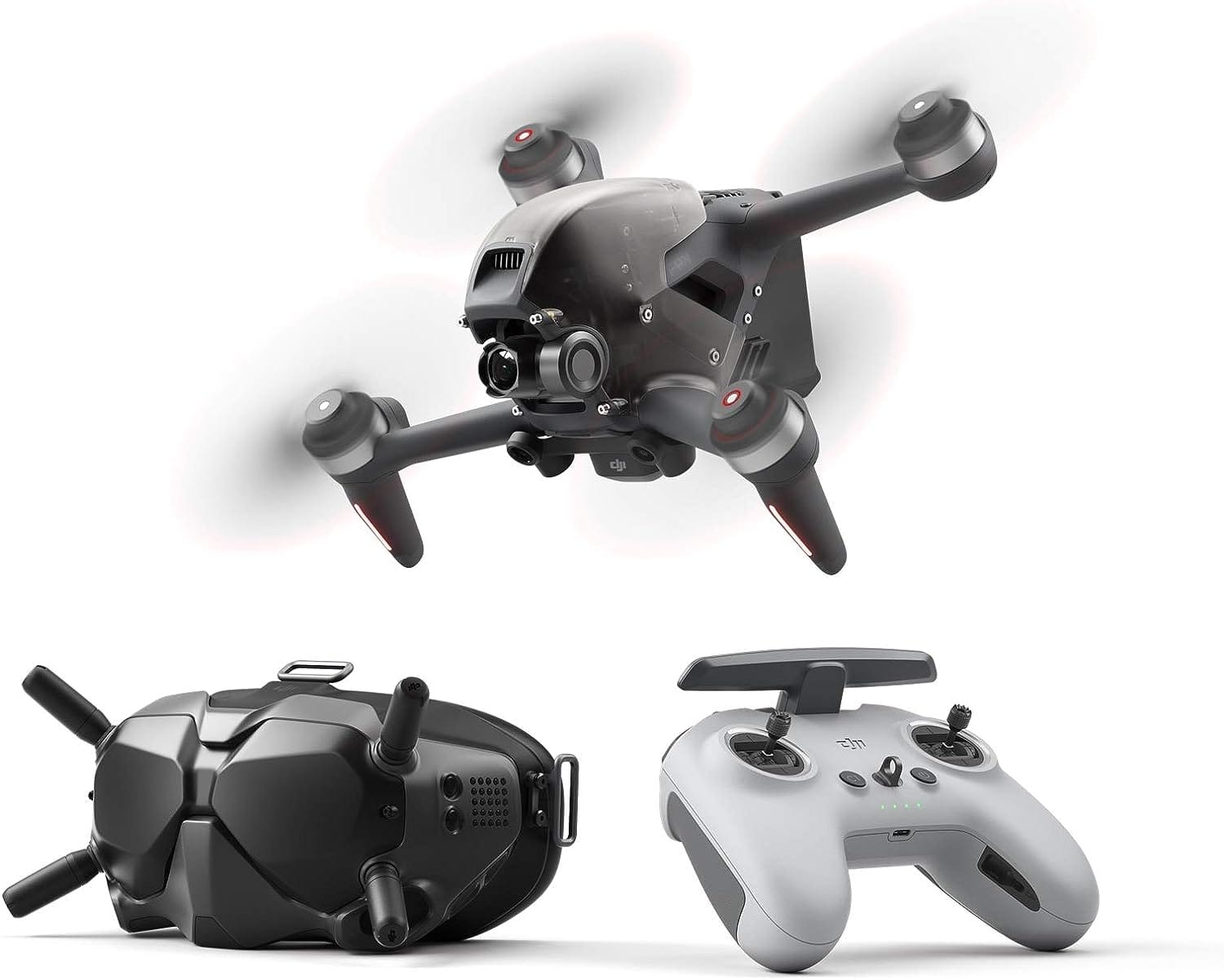
DJI FPV Drone
- IMMERSIVE FLIGHT EXPERIENCE
- 4K/60FPS VIDEO
- BRAND-NEW S MODE
- ADVANCED SAFETY FEATURES
- OCUSYNC 3.0 TRANSMISSION SYSTEM
This is an affiliate link. We earn a commission if you make a purchase, at no additional cost to you.
» RELATED: DJI Avata vs. DJI FPV (In-Depth Comparison)
The downsides of DJI FPV
As we wanted to focus as much as possible on all the reasons you may want to choose the DJI FPV over the DJI Avata, we also have to mention the DJI FPV downsides:
It breaks easily: If you have even a minor crash with the DJI FPV drone, it’s likely the drone won’t survive. The arms structure is poor, and the drone is vulnerable to crashes. You can attach accessories such as arm bracers, but it will help only a little bit.
Camera quality is not the best: Compared to many FPV VTX cameras, it’s fantastic. But as compared to other drone cameras and to the DJI Avata one, it is not something you would like to create cinematic content with it.
It takes up a lot of space: The DJI FPV is bulky and heavy; it does take up a lot of space. Franky, if you carry the DJI FPV, goggles v2, and the remote controller, you will need an entire backpack dedicated to it.
It’s an older-generation drone: The DJI FPV was released at the beginning of 2021. It’s a three years old drone, which is not the latest generation. Moreover, being the first FPV drone built by DJI, my opinion is that this drone is just the preliminary stages of a long line of FPV drones that DJI will release. The first is not always the best.

